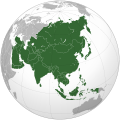This article needs additional citations for verification .(September 2024) |

| Language Endangerment Status | |
|---|---|
| Extinct (EX) | |
| |
| Endangered | |
| Safe | |
| |
Other categories | |
Related topics | |
 UNESCO Atlas of the World's Languages in Danger categories | |
This is a partial list of extinct languages of South America , languages which have undergone language death, have no native speakers and no spoken descendant.
Contents
- Argentina
- Bolivia
- Brazil
- Chile
- Colombia
- Ecuador
- French Guiana
- Guyana
- Peru
- Southern Cone
- Uruguay
- Venezuela
- See also
- References
There are 176 languages listed.










